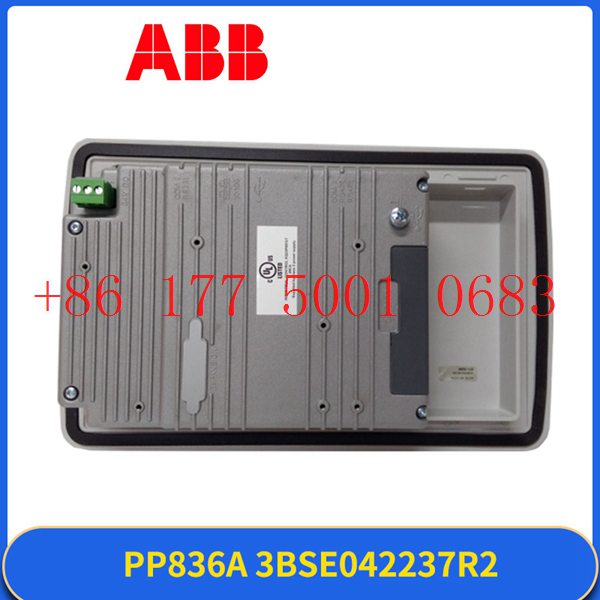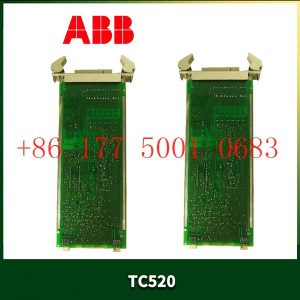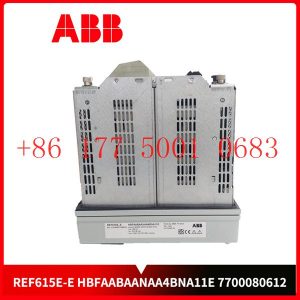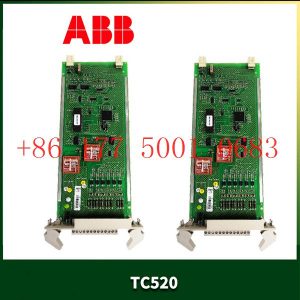Description
hardware flow control. It is an ideal choice in the field of industrial automation.
Implementation of communication between ABC industrial robot and PLC based on DeviceNet fieldbus technology
introduction
In modern production systems, industrial robots and PLCs need to communicate and collaborate to complete production tasks. That is, the
industrial robots output signals to the PLC, allowing the PLC to control related equipment to drive the robot”s front-end tools. This article
mainly analyzes the communication problems between ABB industrial robots and PLC based on DeviceNet fieldbus technology.
DeviceNet is a common network communication method in the field of automation. ABB industrial robots establish a network to communicate with
Siemens PLC based on the DeviceNet network.
1Configure DSQC652
There are mainly 5 types of standard I/0 boards commonly used in ABB industrial robots [2]. Except for the different addresses assigned to
them during setup, their configuration methods are basically the same. This article mainly analyzes the ABB standard I/0 board DS0C652, which
mainly builds communication modules based on the DeviceNet network. The DS0C652 board has a distributed I/O module with 16 digital input and 16
digital output interfaces. The board is installed in the ABB industrial robot control cabinet. First, define the specific operation steps of the DS0C652 board,
enter the teach pendant control panel, then enter the configuration menu (Figure 1), select the DeviceNetDevice menu, and add a template to enter Figure 2.
ABB standard I/0 board is hung on the DeviceNet
network, so the address of the module in the network must be set. The jumpers 6 to 12 of terminal x5 are used to determine the address of the module.
The available address range is 10 to 63. Modify the parameters in the template parameters to complete the DS0C652 board settings. Click the drop-down
menu to select the “Use value from template” row, select
“DS0C65224VDCI/0Device”, and then the parameters that need to be set include the address of the I/0 board in the bus.
Figure 1 Configuring DSQC652
2Configure signals and parameters
After completing the DS0C652 board setting, the I/0 signal setting will be performed. Setting the I/0 signal is the basis for establishing communication with
the PLC. The PLC communicates and transmits data with the ABB industrial robot through the I/0 signal and the DS0C652 board. As shown in Figure 3, in the
signal configuration interface, there are many default I/0 points after the system is established. Modification is not allowed. Click “Add” to add signals. When setting
input and output signals, their address range is 0~15. First, enter the signal menu in the configuration options to set the input and output types, and modify the corresponding parameters.
After completing the settings, the computer prompts that you need to restart the settings. If there are multiple signals that need to be defined and the waiting time
is long after restarting multiple times, you can click “Cancel” and wait for all signals to be defined before clicking the “Yes” button to restart. After the signal settings are
completed, click to select “Input and Output” in the ABB menu to check whether all signals have been set.
Figure 2 Configure DSQC652 parameters
Figure 3 Signal parameter settings
During the signal establishment process, attention should be paid to the DSoC652 port and PLC port addresses used, and the corresponding address table should be
established, as shown in Table 1. The robot interacts with the PLC through I/O signals. During the setting process, there must be no errors in the port and address number
of the PLC connected to the DSoC652. If the address is set incorrectly, the communication between the robot and the PLC will not work properly.
The entire robot teaching pendant setting process is shown in Figure 4.
https://www.xmamazon.com
https://www.xmamazon.com
https://www.plcdcs.com/
www.module-plc.com/
https://www.ymgk.com
ABB DSQC1016 DeviceNet board
ABB DSQC 691 It is the signal board under the DeviceNet bus
ABB DSQC 652 Digital IO module
ABB DSQC 651A Communication configuration
ABB DSQC 602 Input/output processor
ABB DSQC 502 Communication interface module
ABB DSQC461 Robot I/O configuration
ABB DSQC 417 The driver drives the servo unit
ABB DSQC 406 driver
ABB DSQC 332A Drive controller
ABB DSMB 144 57360001-EL Robot system memory module
ABB DSDO 110 57160001-K Automatic industrial control equipment
ABB DSDI 115 57160001-NV Connection unit
ABB DSBC 172 57310001-KD DCS control system
ABB DSBB 175B 57310256-ER Output module
ABB DSBB 175 57310256-CC Positioning and pulse
ABB DSAI 145 57120001-HA ABB analog board connector
ABB DSAI 130 57120001-P Servo motor
ABB DSAI110 57120001-DP Analog input
ABB-DAPI-100-3AST000929R109 Automatic spare parts module
ABB DSQC1023 Input/output module
ABB 07AA61 control system
GE DS3800HPIB part of the Speedtronic Mark
GE SR489-P5-HI-A20-E generator management relay
GE IC697PWR720 Power Supply Adapter module (PSA)
GE IC697PWR711 power supply module
GE IC697MDL740 discrete output module
GE IC697MDL671 listed in GE Series 90-70
GE IC697MDL652 ype of positive/negative logic
GE IC697MDL350 discrete output module
GE IC697MDL250 Discrete Input Module
GE IC697MDL241 discrete input module
GE IC697HSC700 High-Speed Counter (HSC)
GE IC697CPX935 Series 90-30 Central Processing Unit (CPU)
GE IC697CPM925 Central Processing Unit (CPU) module
GE IC697BEM713 Bus Transmitter Module (BTM)
GE IC697BEM711 Bus Receiver Module (BRM)
INTELLISCANDE14-405NM SCANLAB intelliSCAN scan heads
SQ-300I 8700700-006 Hybrid automatic voltage control (AVC)
CMA130 3DDE300410 ABB temperature controller
301131 PILZ Security bus module
T8111C ICS TRIPLEX Trusted TMR Processor
C2G170-24 P0973BL ENTERASYS network switch
PLATE F860-CA redundant fieldbus power
STK-RPS-150PS P0973BP Optical fiber interface board module









Reviews
There are no reviews yet.